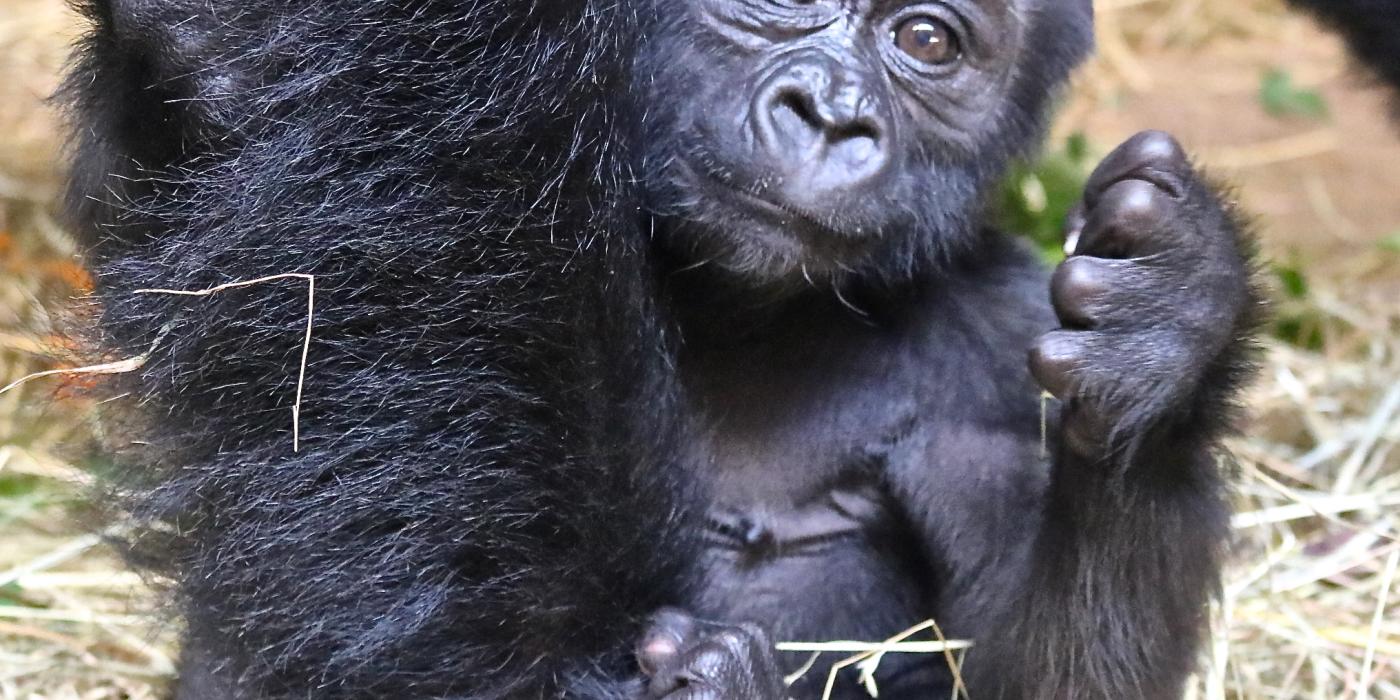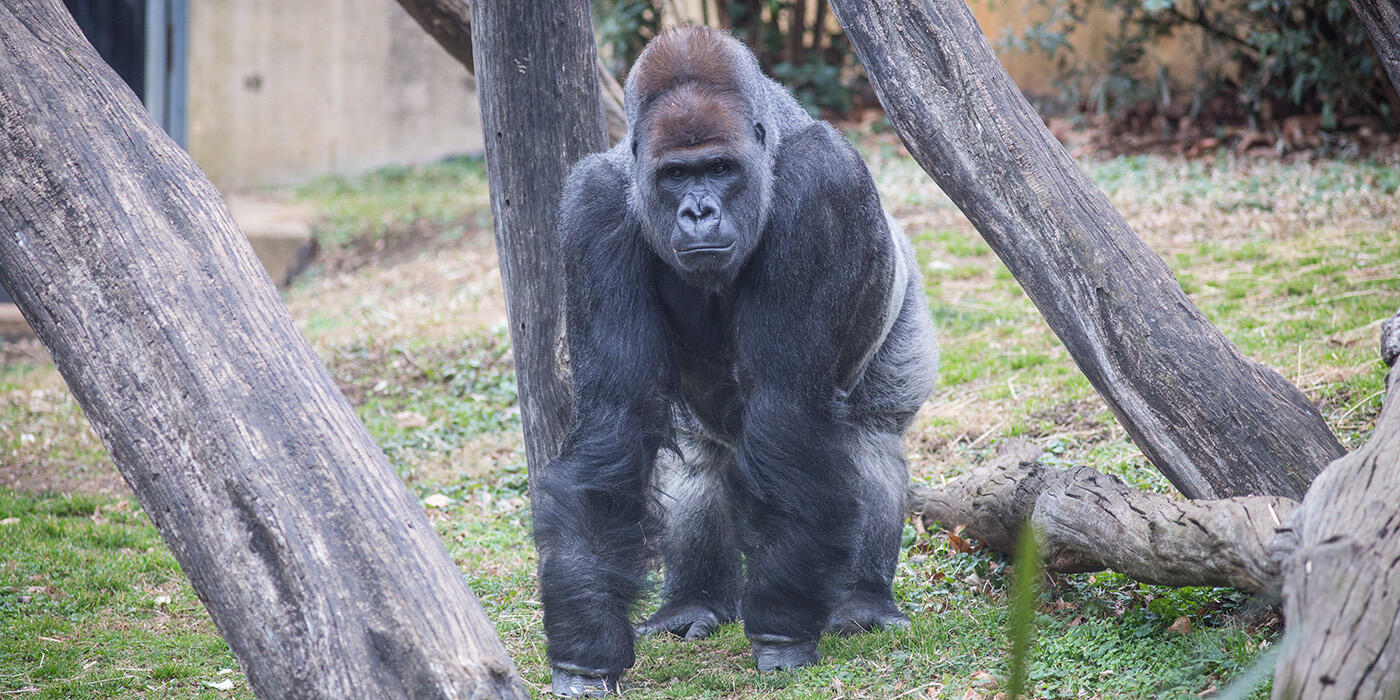#GorillaStory: Make Way for Moke
This update was written by primate keeper Melba Brown.
Our western lowland gorilla infant Moke’s appearance has changed so much since he was born 15 weeks ago. Both his mother, Calaya, and father, Baraka, have distinctive reddish-brown hair on top of their heads. Moke’s phenotypic genes are expressing a brownish coloration on top of his head, and as he matures, the hue may deepen and become more unique. His black coat has emerged in typical gorilla form and is thicker than it was a couple of months ago. His abdomen, which lacks longer hair, is smooth and supple.
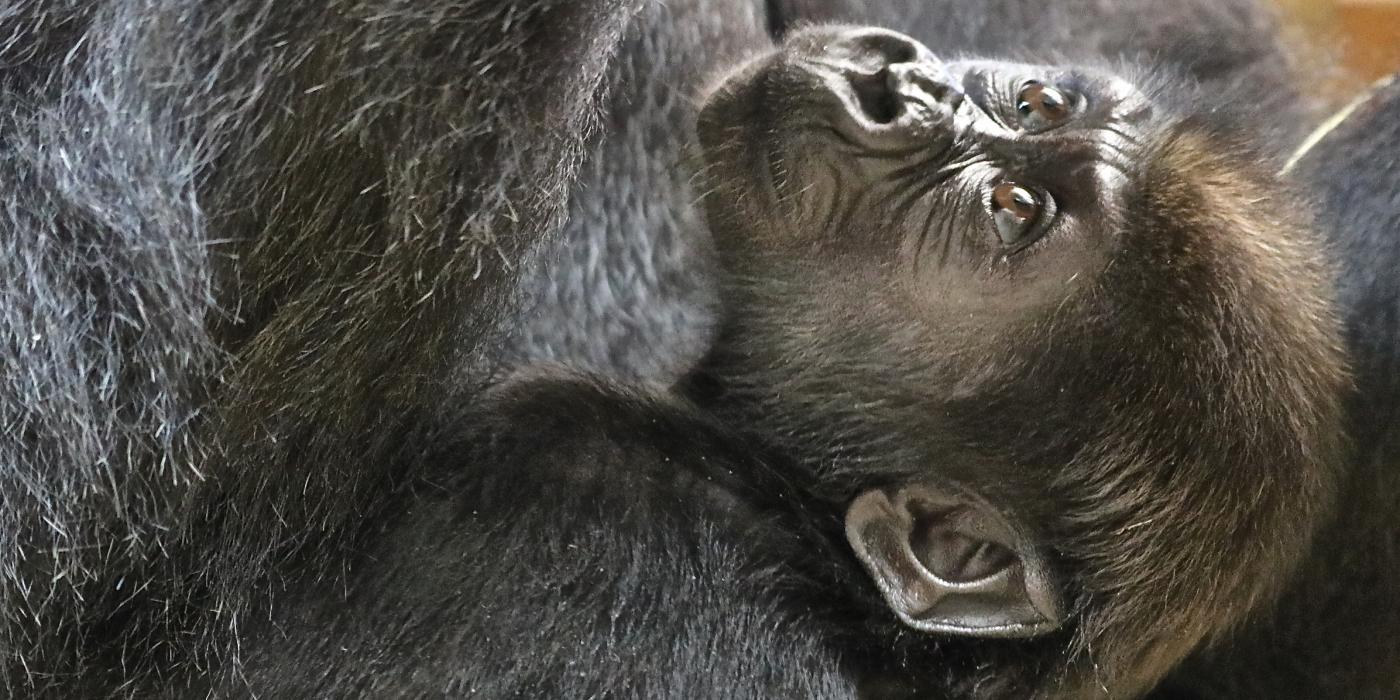
When Moke was born, his palms and foot pads were mostly pink with thin black stripes. Although he still has some pink coloration—including underneath his fingernails and toenails—black is now the dominant color.
Moke walks with noticeable swiftness now; he is able to knuckle walk and ambles over to Kibibi and Baraka with more frequency. He also practices standing on two legs, leaning up against the side of a large scale we use to monitor our gorillas' weights.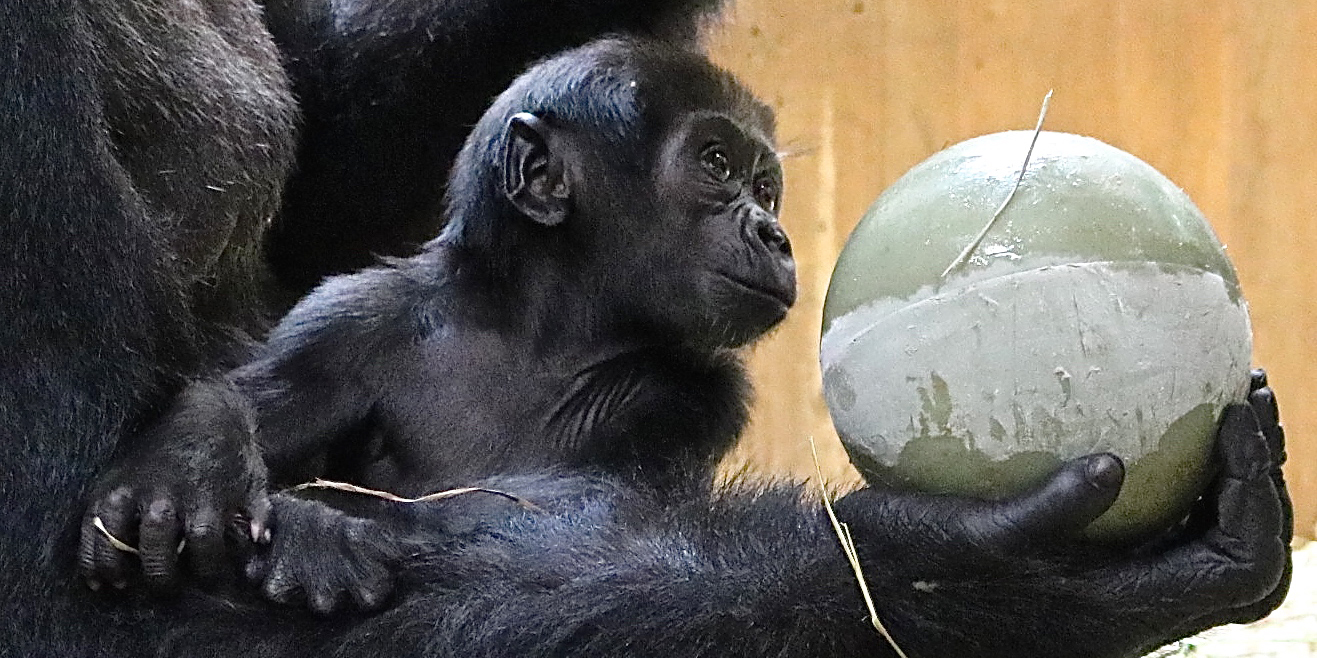
Don’t let Moke’s diminutive size fool you, though—he has a strong grip. At times, Calaya will carry Moke on her back, and he is able to hang on tight. Recently, he discovered a PVC pipe that we use to train the adults for voluntary blood draws. Primate keepers observed Moke climbing up to the device and peeking through the portal. He seemed very intrigued by it; Calaya pulled him down from the surrounding mesh multiple times!
Moke still has nine teeth, and he picks up whatever food he can get his hands on during Calaya’s feeding time. His favorite item to chew is hay, but he has also tasted primate biscuits, fruit skins and remnants of a coconut shell. He is still nursing robustly! When his belly is full, he leans back with his eyes closed and takes a nice, deep nap.
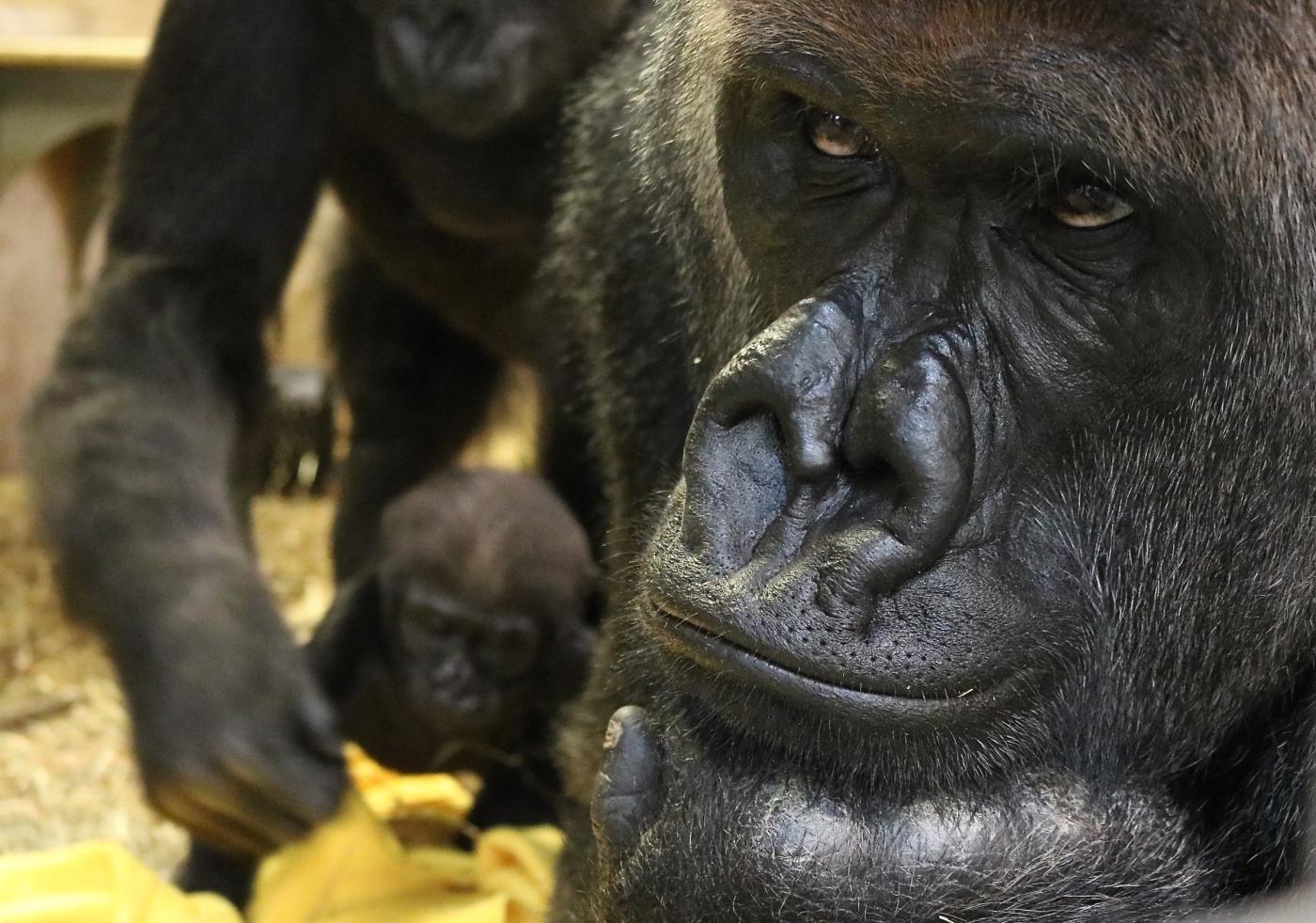
Mandara clearly wants to make contact with Moke again. However, her approach is rather intense. She will posture and vocalize assertively towards Calaya and Moke. This prompts Calaya to bolt towards Mandara and chase her away. During these encounters, Baraka will position himself between them, and things settle down as quickly as they started.
Perhaps if Mandara took her lead from Kibibi and Baraka, Calaya would be more willing to let Moke interact with her. When Moke is older and consuming solid foods, there is a better chance that Calaya will allow Mandara to interact with him directly.
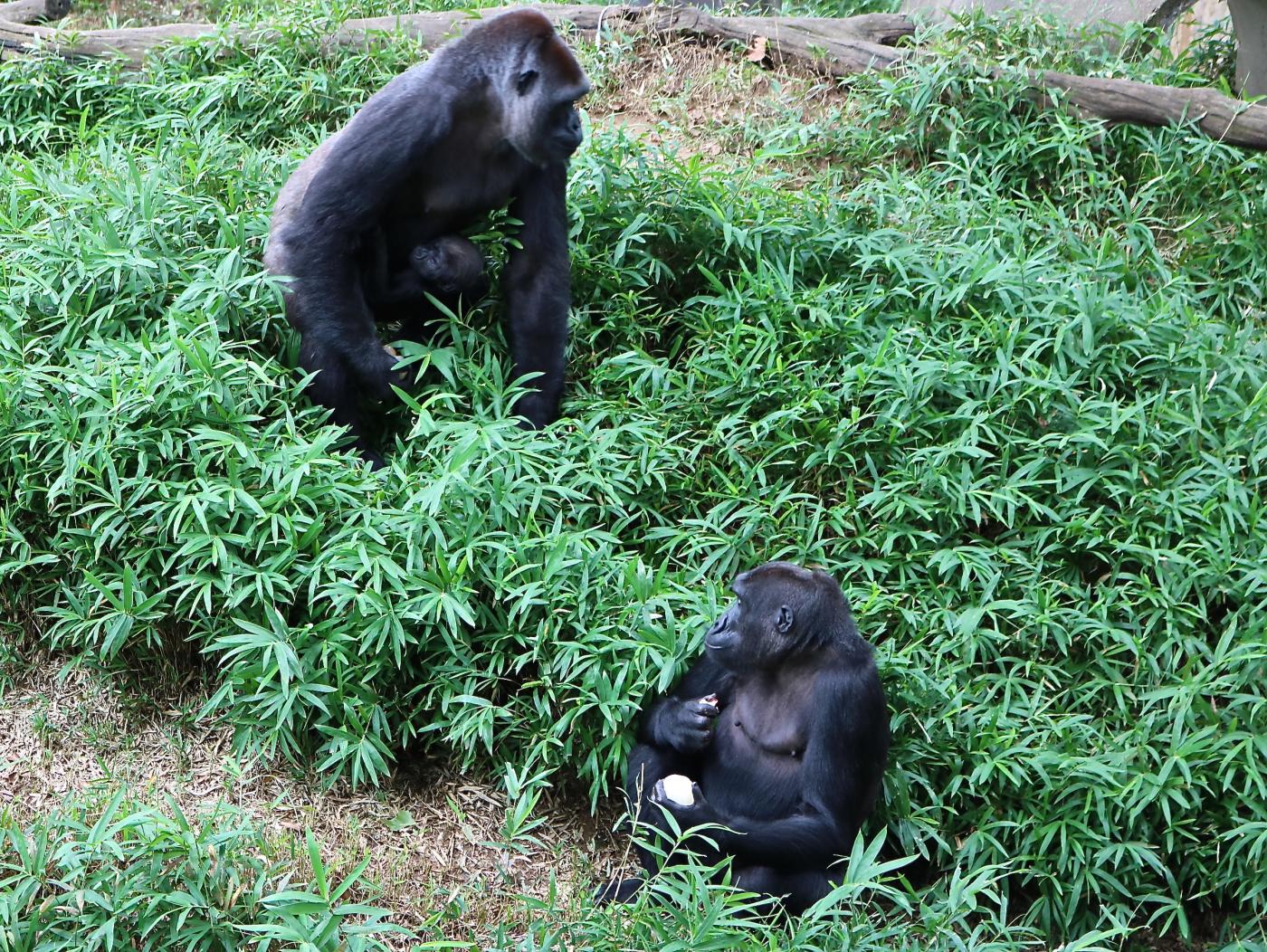
Calaya’s affection towards Moke is unmistakable. Occasionally, I will catch a glimpse of her looking at his face and gently stroking his chin with her forefinger. Another time when Moke was napping beside Calaya on a pile of hay, she gently patted his back several times. She is an amazingly dedicated mother and her devotion to him is so endearing!
Can’t get enough of Moke? Follow the latest updates on the Smithsonian’s National Zoo youngest gorilla using the hashtag #GorillaStory. During your next Zoo visit, don’t miss the daily 11:30 a.m. gorilla keeper talk and other amazing animal encounters!
Related Species:
